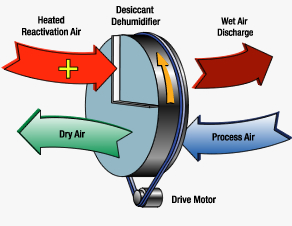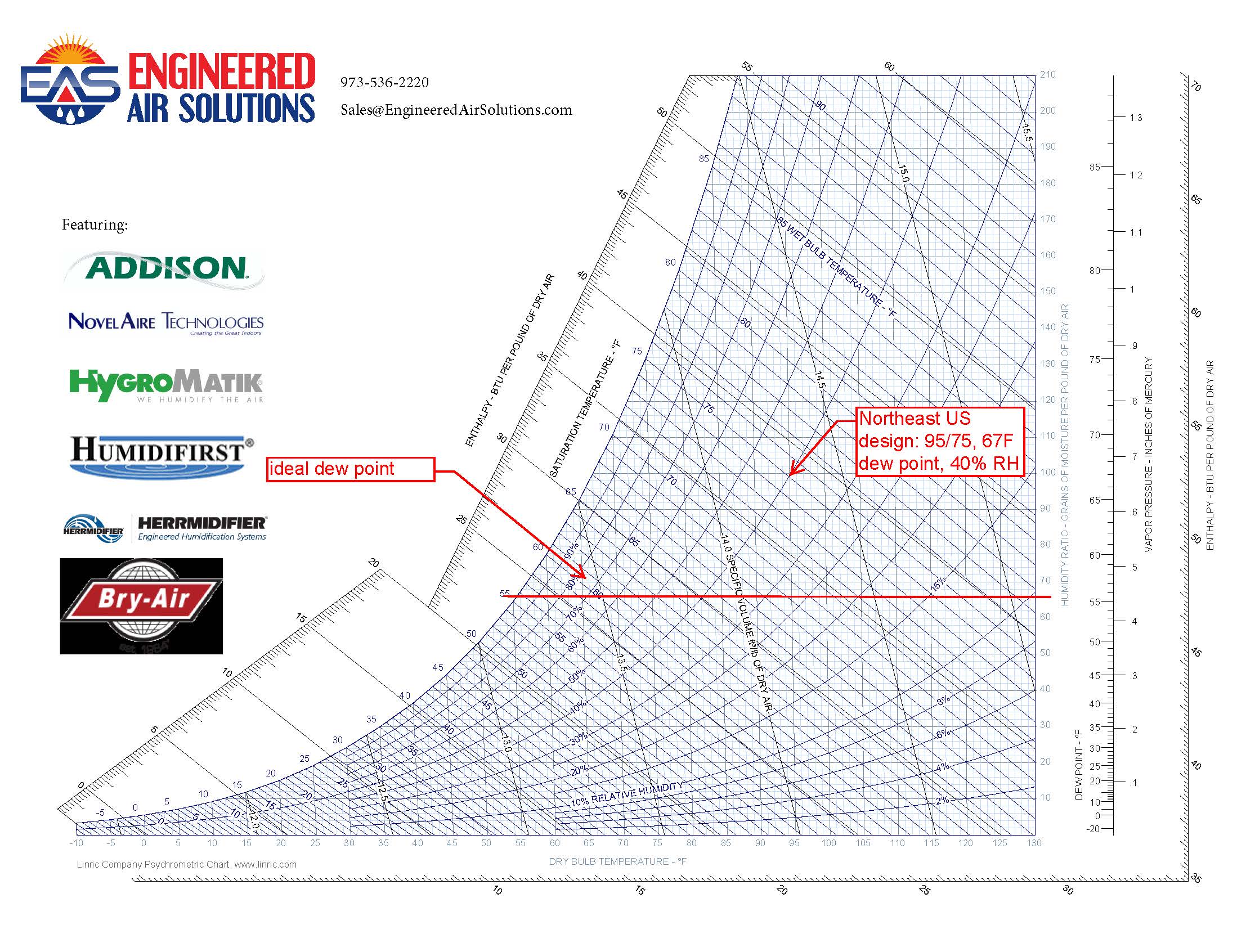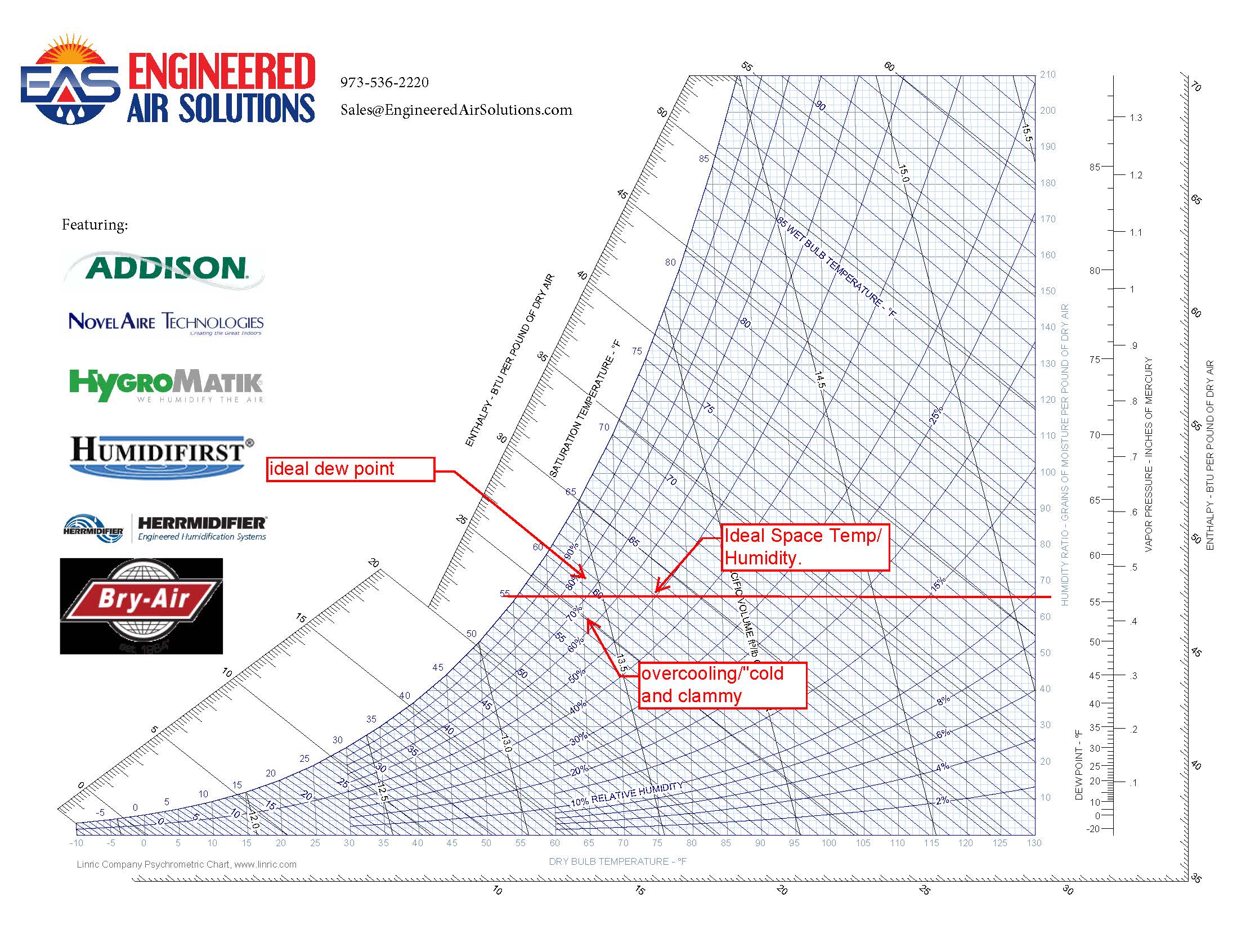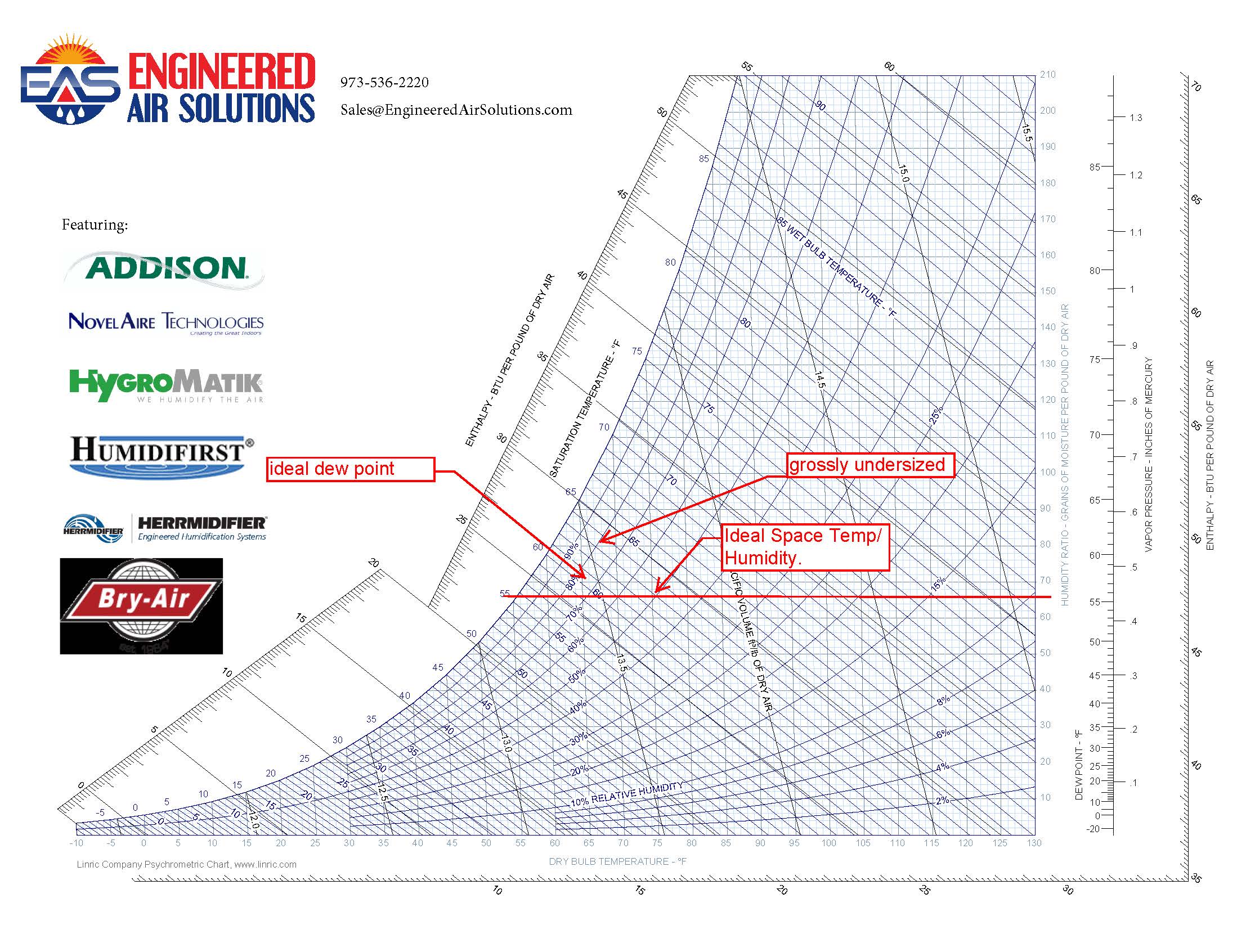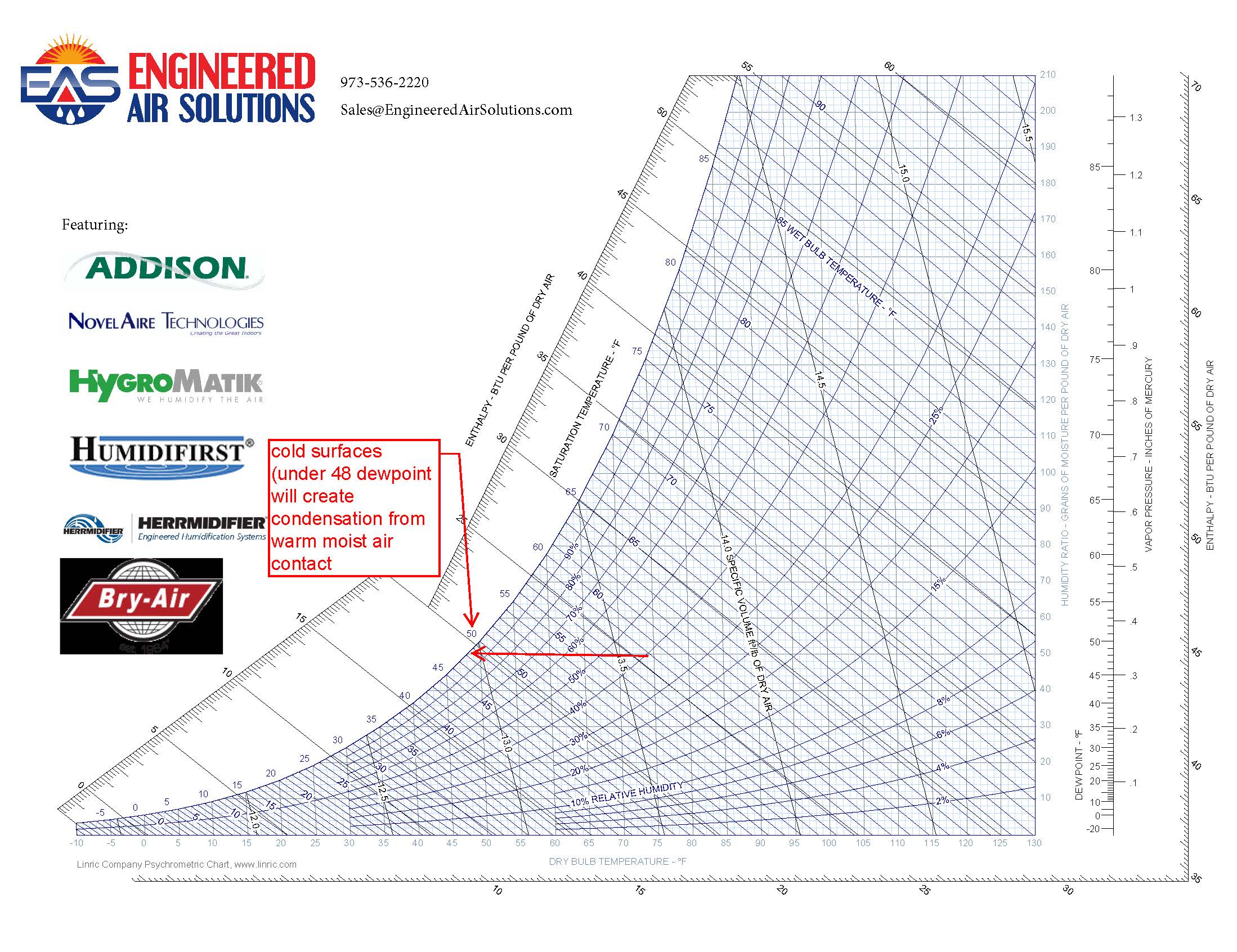What is a humidity problem?
Over the years, as our firm gains a presence in the humidity control discipline of HVAC applications, we are constantly being called in for having a “humidity problem”. Funny thing is this phrase surfaces to describe a variety of problems which are quite different. These different issues can be addressed by a simple no cost solution or a six or seven figure capital investment.
First, to understand the problem, you need to understand humidity (see psychrometrics for the common man). In most cases the perceived problem is a relative humidity issue as it’s the level of humidity, RELATIVE to the air temperature. Thus, one really needs to look at the reference temperature as well as the required humidity.
One humidity problem is observed on a hazy, hot and humid day. Here, believe it or not the warm temperature allows the air to hold a lot of moisture and here lies the humidity problem. Interestingly enough, a 95/75 is “only” 40% RH but the problem is the 67F dew point.
The above humidity problem is way different than “cold and clammy” situation. Here, inside, paper curls and there is a high level of being uncomfortable. The simple answer is that the air conditioning, which removes moisture as it cools, is over cooling. Fundamentally, there may be a capacity control issue. For example, If the calculated load on a design day is 4.6 tons, its not uncommon to use a 5 ton unit. On an off-design day (ie 88F vs 95), the load is even lower. So, instead of an ideal 55F discharge, the HVAC unit is delivering a lower temperature discharge. The lower discharge will mean a lower space temperature with a higher relative humidity (example: you want 72/50% RH but an overcooled space may delivered 68, 65% RH) . For a 5 ton unit (or most units below 7.5 tons) there may be only 1 compressor which would be on or off. So as a result, if the thermostat is set for 75 (and there is no sensor for humidity), whenever the unit cycles on it overcools; when it is off, the space gets warm. In hindsight, in the situation above, a simple solution is to go with a slightly undersized unit (say 4 tons) as the HVAC unit will run longer to cool on design days (wring out more moisture) but also will have less conditions where it is oversized. If there is more money in the budget, hot-gas bypass, modulating compressors or multiple units be recommended.
A grossly undersized unit brings on another humidity problem. If the unit load is 4.6 tons and a 2 ton unit is installed, instead of having a 55F saturated discharge, the leaving air will be too high. In some scenarios, the cooling of air may not even hit the dewpoint, not removing the moisture all together.
Another humidity problem is too much humidity being brought into a space. Generally, for traditional HVAC there are certain rules of thumb that cover cooling and coincidentally dehumidification: 400 cfm/ton, 10-25% outside air, 55 discharge (saturated) supply air. However, if there is a load that is greater than the norm, separate considerations must be met to address the humidity control. For example, for a high school gymnasium, there are more people per square foot than an office and people produce moisture (.15 – .35 Lb water/per person; 1 gallon of water is approximately 8.3Lb; 1 Lb of water=1050 BTU of latent capacity). Additionally, the outdoor air requirements for multiple people are higher so introducing outdoor air will also bring up the humidity load in the space. Here a separate dehumidifying sequence should be considered such as hot gas reheat, refrigerant sub-cooling or a small desiccant dehumidifier. The latter is always recommended as it can be added to a system after the fact without changing the existing system.
Finally, the last humidity problem is seen in the colder months. Ironically enough, the cold temperatures bring on dryness so this humidity problem is unique. We have gotten a lot of calls for work out studios as condensation builds “everywhere”. The issue here is the multiple people in the space are producing moisture and the warm, higher RH air is hitting cold surfaces (windows, floor mats, etc) where the surrounding air is lower with less capability to hold water. As a result, moisture will collect, similar to morning dew on grass on a cool summer morning. Here, better air circulation by cold surfaces as well as bringing in more cold outside air will dry out the space.
To summarize, while humidity problems exist, it needs to be addressed by the source of the moisture as well as the overall temperature you are trying to maintain.
Learn More


